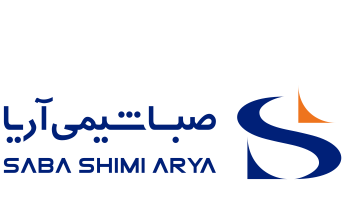


Primers:
- Zinc-Rich epoxy-polyamide primer
- Zinc phosphate polyamide epoxy primer
- Zinc chromate polyamide epoxy primer
- Zinc-rich ethyl silicate primer
- Ocher epoxy polyamide iron oxide primer
- Wash primer
- Epoxy phenolic primer
Midcoats:
- HIGH BUILD epoxy polyamide midcoat
- MIO- HIGH BUILD epoxy polyamide midcoat
Topcoats:
- Gloss, semi-gloss and matte epoxy topcoat
- Gloss, semi-gloss and matte polyurethane topcoat
- Solvent-free epoxy polyamine- for freshwater applications
- Epoxy polyamine glass flake
- Epoxy phenolic topcoat
- Epoxy coal tar polyamide
Heat Resistant Paints:
- 250 ℃ heat resistant paint
- 400 ℃ heat resistant silicone paint
- 600 ℃ heat resistant silicone paint
Thinners:
- Epoxy thinner
- Polyurethane thinner
- Heat resistant paint thinner
- Ethyl-Silicate Thinner
- Washing thinner
Epoxy Floor Coatings:
- Epoxy polyamide primer for concrete painting
- Epoxy polyamine floor coating (midcoat)
- Epoxy polyamine floor coating (topcoat)
- Transparent epoxy lacquer
An Introduction to Floor Coating Systems:
Here, several coatings produced by Saba Shimi Arya are introduced. It is worth mentioning that most products used in the following systems are certified by the Research Institute of the Petroleum Industry. In addition, all the thicknesses mentioned for these systems are the thickness of dry film.
System 1: For industrial and offshore areas with high corrosion and service life of ten years
- Preparing the surface: Sa 3
- First layer : A 75 µ zinc-rich ethyl silicate primer
- Second layer : A 20 µ epoxy tie-coat
- Third layer : A 200 µ MIO epoxy polyamide primer
- Topcoat: A 50 µ polyurethane film
System 2: For industrial and offshore areas with moderate to high corrosion and service life of ten years.
- Preparing the surface: ½Sa 2
- Primer: A 75 µ zinc-rich epoxy polyamide primer
- Midcoat: A 100 µ MIO epoxy polyamide primer
- Topcoat: A 50 µ polyurethane film
System 3: Specific for submerged structures in seawater, drinking water, oil and fuel reservoirs, and a service life of 10 to 15 years
- Preparing the surface: Sa 3
- A 1000 µ epoxy glass flake
System 4: For oil, gasoline, diesel fuel, and saltwater tanks, wastewater pipelines with a service life of 10 to 20 years
- Preparing the surface: Sa 3
- A 450 µ epoxy coal tar
- System 5: For industrial facilities installed in medium corrosion environments exposed to the sunlight with a service life of 5 years
- Primer: A 60 µ zinc phosphate epoxy polyamide primer
- Midcoat: A 100 µ MIO epoxy polyamide primer
- Topcoat: A 50 µ polyurethane film
System 6: For firefighting water storage tanks with a service life of ten years
- Primer: A 60 µ zinc-rich epoxy polyamide primer
- Midcoat: A 200 µ high build epoxy polyamide midcoat
- Topcoat: A 50 µ epoxy topcoat
System 7: For industrial structures installed in coastal areas and non-industrial climates with a service life of 5 years
- A 60 µ ocher iron oxide alkyd primer
- A 60 µ alkyd midcoat
- A 60 µ alkyd topcoat
System 8: For tanks and installations exposed to heat up to 600 °C
- A 30 µ heat resistant silicone primer
- A 30 µ heat resistant silicone topcoat
System 9: For epoxy floor coatings applied for industrial sheds, production halls of factories, warehouses, hospitals etc. with a service life of 9 years
- Epoxy polyamide primer for floor coating
- Epoxy polyamine midcoat for floor coating
- Epoxy polyamine topcoat for floor coating
Factors affecting coating efficiency
Good design of the parts
- Flat and smooth welding points
- Avoid the designs in which the corrosive materials collect in the corners and edges
- Avoid putting two different metals in contact
Proper surface preparation
- Removing contaminations, oil and dust using a solvent or detergent
- Removing oxide layer and creating a good surface profile to improve adhesiveness of the coating using different surface preparation methods (waterjet, sandblast, shut blast etc.)
Choosing Application Method
The application method should be selected such that to paint the inaccessible points too. Otherwise, corrosion starts from that point which reduces the service life of the coating system. Therefore, it is recommended to cover these areas using a brush before applying the paint to cover welding points and sharp edges, to let the topcoat penetrate into the pores and layers created by the welding lines. Common air sprays are used for small parts to prevent paint loss. Airless spray is much better compared to the common type in terms of efficiency and speed of work and creates a thicker film with least paint loss.








